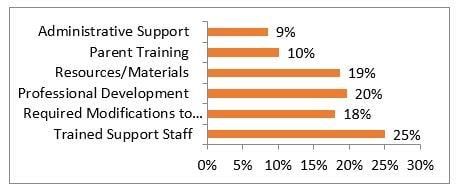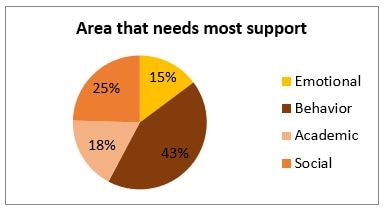Autism interventions and assessment
by

Autism spectrum disorders (ASD) are a complex group of related disabilities marked by differences in communication and socialization, a limited range of interests, and the presence of repetitive behaviors (NASP, 2010). Students with ASD often include the following characteristic:
- Cognitive. Differences in the development of traditional cognitive skills, with incongruencies between development in processing visual/nonverbal information and rote learning with delays in developing skills in processing verbal information and a difference in the learning and use of abstract information;
- Social skills. Poor development of traditional social skills and rule governed behavior;
- Communication. Differences in responding to quickly presented verbal information, understanding complex commands, and expressing wants and needs;
- Organization/self-direction. Organizational abilities do not conform to traditional classroom practices. Often has difficulty screening out distractions, completing activities independently, initiating work activities, organizing free time, stopping one activity and moving on to the next, being flexible, shifting attention to a new focus.
The Group Autism Speaks
Provides Excellent resources to assist in the Support of Children with ASD, they also provide information and statistics and information about Autism Research.
Here are some of the data and information they have recently collected.
- In 2020, the CDC reported that approximately 1 in 54 children in the U.S. is diagnosed with an autism spectrum disorder (ASD), according to 2016 data.
- 1 in 34 boys identified with autism
- 1 in 144 girls identified with autism
- 31% of children with ASD have an intellectual disability (intelligence quotient [IQ] <70), 25% are in the borderline range (IQ 71–85), and 44% have IQ scores in the average to above average range (i.e., IQ >85).
- Autism affects all ethnic and socioeconomic groups, but minority groups tend to be diagnosed later and less often.
- Early intervention affords the best opportunity to support healthy development and deliver benefits across the lifespan.
- There is no medical detection for autism.
Evaluation procedures and assessments like the Vineland 3 continue to assist in the identification of students who need support for Autism Spectrum Disorder (ASD), increasing its prevalence and requiring educators to develop practices that allow them to support more students.
In order to guide our efforts we have worked with Special Educators, surveying them, in order to discover the challenges they are facing in supporting these students.
They indicated that they need more and better trained coworkers, Professional Development and Resources and instructional programs/materials.

They also indicated that the areas that they need the most support are Behavioral and Social.

The research on ASD provides resource on the different programs that have been found to effectively support the students with ASD. Specifically, a study (de Bruin, Deppeler, Moore, and Diamond, 2013) reviewed the research on school-based programs:
- antecedent-based intervention studies investigating proactive instructional procedures such as priming, prompting, environmental manipulations, scheduling, choice, and chaining are effective for teaching skills in communication, learning readiness, sensory/emotional regulation, daily living, and self-regulation, as well as proactively addressing challenging or stereotypical behaviors;
- consequence-based intervention studies using reactive instructional procedures such as punishment, extinction, differential reinforcement, functional communication training, overcorrection, time out, and response blocking are effective for addressing targets such as aggressive behaviors, stereotypical behaviors, academic skills, communication skills, social skills, and daily living skills;
- self-management-based intervention studies using instructional procedures such as self-prompting, self-monitoring, self-recording, and self-rewarding. are effective for teaching behaviors and skills including academic skills, social skills, communication skills, daily living skills, challenging behavior, as well self-regulation; and
- video-based interventions using instructional procedures such as video modeling, video self-modeling, video priming, and video prompting are effective.
Regardless of the programs or strategies being used to support students with ASD, it is important to determine their needs early in their educational journey, screening and assessment are very important. Also activities and interventions are more likely to succeed if teachers find out what the student’s strengths and interests are and emphasize them. To help the students tap into those avenues and create opportunities for success. Teachers should give positive feedback and lots of opportunities for practice.
Ready to learn more?
Join us for a webinar, visit PearsonAssessments.com/Vineland or contact us at +1 (800) 627-7271.
